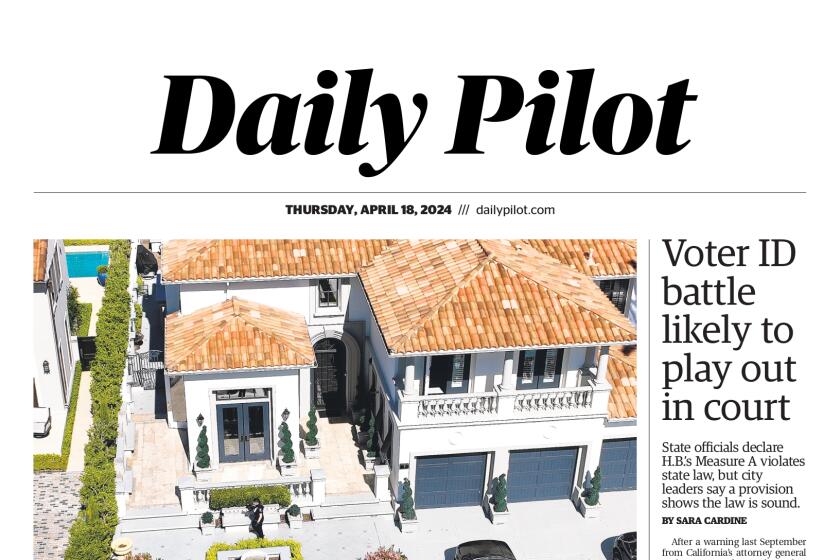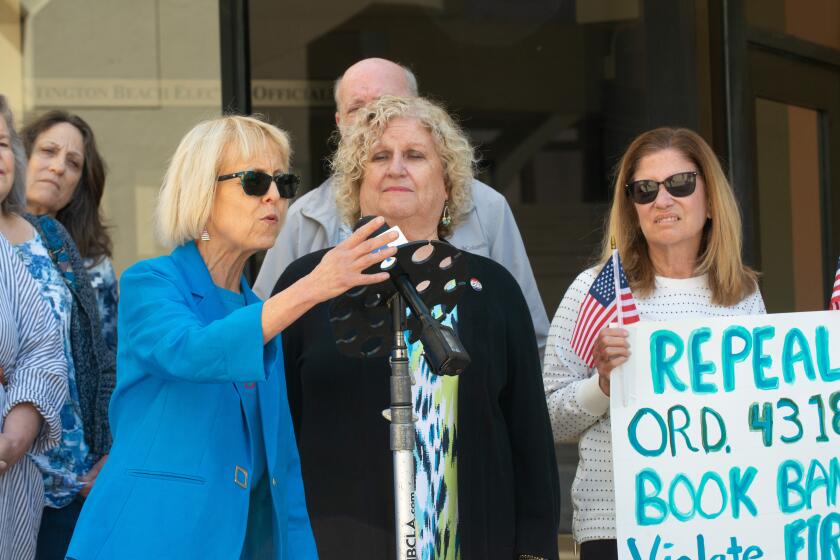Study: Beach litter mostly comes from land, not sea
An environmental group that studied beach litter in Crystal Cove State Park for seven years has found less trash over time and that most debris comes from inland or is dumped onto the beach, rather than washing up from the sea.
Volunteers from Coastkeeper Orange County surveyed a 200-yard stretch of beach just south of Pelican Point. Starting in 2003, they collected trash many times a year and analyzed results. While they found everything from lobster traps to condoms, the most common items were made of plastic and came from landlubbers. Balloons and straws accounted for most the pieces of trash.
“I cringe now when I see balloons released, because I know right where it’s going to end up,” said Ray Hiemstra, the associate director of programs at Coastkeeper Orange County, based in Costa Mesa.
“Everybody contributes a little bit at some point,” he added.
Fortunately, people have started to contribute less over the years: in 2005, the surveyors found an average of 137 pieces of debris each day they visited, while in 2008 they found and average of 65 pieces.
Over the years, they found fewer plastic bottles, as recycling programs caught on. It’s progress, Hiemstra says, but debris still remains a problem.
Marine animals often mistake trash for food and can fall ill or die after ingestion. Also, who can forget the images of sea turtles or birds caught in plastic and other types of human debris?
“What we’re seeing here is just a fraction of what’s in the ocean,” Hiemstra said.
The study’s main finding is that most of the trash comes from inland as opposed to the ocean: 75% of the material came from land. While mariners lose things like buoys, nets and ropes, they don’t wash up as often as the errant candy wrapper from the Santa Ana River mouth.
And at Crystal Cove, sand erosion has exposed more trash this year than in the recent past, as strong storms washed away top layers, said Todd Lewis, the park superintendent.
Much of the litter comes from beachgoers too, he said. Crystal Cove State Park has more than 100 trash bins located at places like beach access paths and next to restrooms.
Sometimes, people will leave all their trash from a fast food lunch at the beach, Hiemstra said. He attributes it, in part, to their cultural upbringing.
“It’s just how things have been dealt with wherever they’re from,” he said.
While individuals play a big role in controlling litter, governments can also help prevent some of it from reaching the beach. Recent innovations have made it so storm drains can catch litter in a grate and still release under heavy water flow, so streets don’t flood.
Crystal Cove has a “Litter Getter” program where kids can earn stickers for picking up trash.
“They’re the next generation,” Lewis said. “They’re the ones learning now about how to take care of our parks and our environment.”
All the latest on Orange County from Orange County.
Get our free TimesOC newsletter.
You may occasionally receive promotional content from the Daily Pilot.



